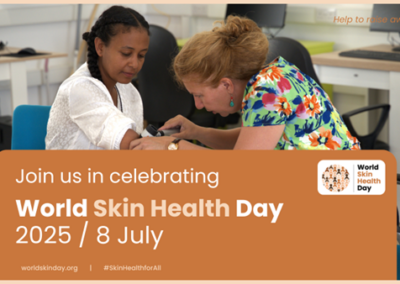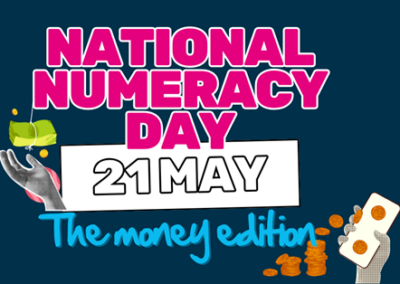Written by Luke Parkes, Assistant Project Manager
ILAP remit
It has been just over a year since the Medicines and Healthcare Products Regulatory Agency (MHRA) established the Innovative Licensing and Access Pathway (ILAP) in response to Britain’s exit from the European Union (1). Since then, many companies have utilised this pathway for their innovative health technologies, and we are now seeing these medicines emerge within the UK’s health technology assessment (HTA) process.
ILAP is a joint initiative between the MHRA, the National Institute of Health and Care Excellence (NICE) (2), the Scottish Medicines Consortium (SMC) and the All Wales Therapeutics and Toxicology Centre (AWTTC). The ILAP process enables early patient access to new medicines by providing companies with strategic advice and anticipating potential challenges in achieving market access. This involves connecting companies with other UK stakeholders to support optimal evidence generation from clinical trials to provide clarity for the evaluation process, and to facilitate timely commercial discussions. In doing so, ILAP enables companies to coordinate and align with HTA bodies in the UK to gain favourable marketing authorisation and HTA scheduling, and allows early discussions on the appropriateness of the medicine for the Innovative Medicines Fund (IMF) (3).
Eligibility
ILAP’s focus is innovative medicines; however, the scope is relatively broad, enabling many medicines to benefit from the pathway. Medicines considered for eligibility include new chemical entities, biological medicines, new indications, or repurposed medicines, and the product must be between pre-clinical and mid-development stages. An innovative passport must be granted to enter the ILAP, which is conditional on the following criteria:
- The condition is life-threatening or seriously debilitating, or there is a significant patient or public health need.
- The technology is innovative (including advanced therapy medicinal product [ATMP], a new chemical or biological entity, or novel drug device combination); treats a clinically significant new indication; treats a rare disease/a priority population (children/neonates/elderly); or it supports UK public health objectives priorities.
- The medicinal product has the potential to offer benefits to patients compared with alternative therapeutic options. Any clinical evidence can be presented subject to the stage in development, and the views of patients/patient organisation views are also requested.
Within the first year of ILAP, 58% of applicant medicines were approved, 10% were not accepted, and 32% are still in progress; the reasons for rejection were not stated (1).
The target development profile
After submitting an application, a decision will be made within 4–6 weeks on whether the passport is to be granted. If successful, a target development profile (TDP) is then developed by a team of experts based on the products characteristics. This is a living document that contains:
- Key regulatory and development features
- Potential pitfalls
- A road map for delivering early patient access
- Tools that may be utilised
- A continuous benefit-risk assessment.
The TDP is produced with input from UK regulatory and guidance bodies and is updated upon availability of new data for the technology. Additionally, the TDP provides access to a toolkit of activities, including support in the planning, design and recruitment for clinical trials, and enhanced patient engagement in the drug development. Guidance can also be gained on the many available licensing routes available, including the Food and Drug Administration’s (FDA) Orbis and the Access Consortium (4, 5), which can accelerate market access internationally.
The application to receive an innovative passport costs £3,624, with an additional initial TDP fee of £4,451 on application success. This service is non-profit, with charges covering the cost of activities.
The HTA access forum
Last month (March 2022), it was announced that a new UK-wide HTA access forum will be launched as part of the ILAP toolkit (6, 7). The forum is anticipated to support companies’ in aligning prospective evidence submissions with current practice and regulation. Such a move may be particularly beneficial in light of the recent update to the NICE methods guide, which now includes experts in regulation on the appraisal committees (8). The new forum will be run by NICE’s Office for Market Access and uses its established safe harbour process (9).
NICE, SMC, and AWTTC invite key stakeholders to be involved in an open discussion regarding the product position in the treatment pathway, implications for service delivery, HTA challenges, and HTA processes. Stakeholder discussions and viewpoints will likely influence the perspective of the HTA agency they were elected by. Stakeholder involvement during dossier development may therefore enable several benefits and efficiencies to be realised by the company; e.g. HTA preparation, evidence generation, and value messages can be adapted accordingly ahead of submission.
If you are interested in finding out more about our market access and HTA services, please contact Source Health Economics, an independent consultancy specialising in evidence generation, health economics, and communication.
References
- GOV.UK. Innovative Licensing and Access Pathway. Available at: https://www.gov.uk/guidance/innovative-licensing-and-access-pathway (last accessed 5 April 2022).
- The National Institute for Health and Care Excellence (NICE). Our role in the Innovative Licensing and Access Pathway (ILAP). Available at: https://www.nice.org.uk/about/what-we-do/life-sciences/our-role-in-the-innovative-licensing-and-access-pathway–ilap (last accessed 5 April 2022).
- The national Institute for Health and Care Excellence (NICE). The Innovative Medicines Fund: engagement on proposals. Available at: https://www.engage.england.nhs.uk/consultation/imf-engagement-on-proposals/user_uploads/b0864_public-engagement-document-for-the-innovative-medicines-fund–imf-_191121–1-.pdf (last accessed 8 April 2022).
- U.S. Food and Drug Administration. Project Orbis. Available at: https://www.fda.gov/about-fda/oncology-center-excellence/project-orbis (Last accessed 4 April 2022).
- GOV.UK. Access Consortium. Available at: https://www.gov.uk/guidance/access-consortium (Last accessed 4 April 2022).
- Scottish Medicines Consortium (SMC). New access tool launched as part of SMC’s joint work on streamlining patient access to innovative medicines. Available at: https://www.scottishmedicines.org.uk/about-us/latest-updates/new-access-tool-launched-as-part-of-smc-s-joint-work-on-streamlining-patient-access-to-innovative-medicines/ (Last accessed 4 April 2022).
- GOV.UK. The Target Development Profile Toolkit. Available at: https://www.gov.uk/guidance/the-target-development-profile-toolkit (last accessed 6 April 2022).
- The National Institute for Health and Care Excellence (NICE). NICE health technology evaluations: the manual. Involvement and participation. Available at: https://www.nice.org.uk/process/pmg36/chapter/involvement-and-participation (Last accessed 4 April 2022).
- The National Institute for Health and Care Excellence (NICE). Safe harbour engagement meetings. Available at: https://www.nice.org.uk/about/what-we-do/life-sciences/office-for-market-access/safe-harbour-engagement-meetings (Last accessed 4 April 2022).




